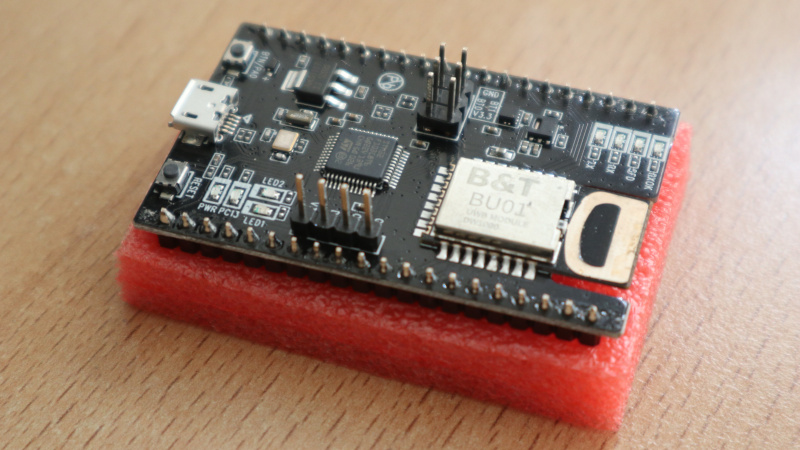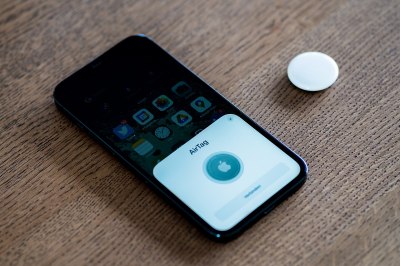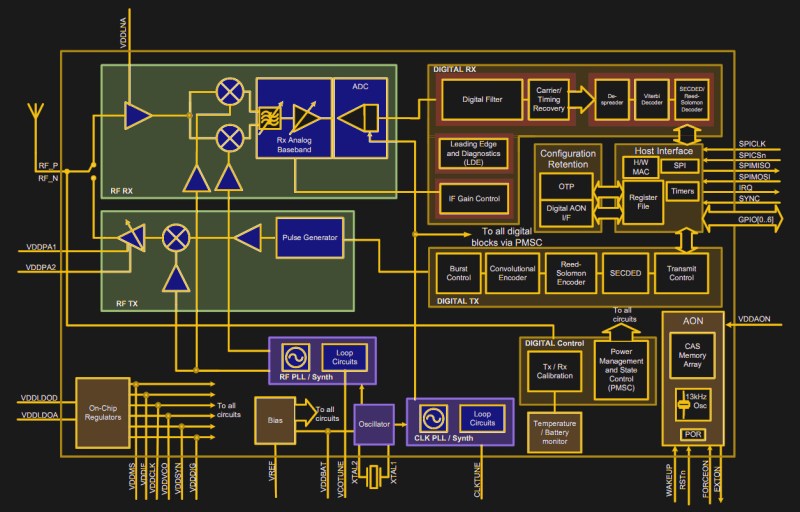
If you’ve been following the world of mobile phone technology of late, you may be aware that Apple’s latest IPhones and AirTag locator tags bring something new to that platform. Ultra wideband radios are the new hotness when it comes to cellphones, so just what are they and what’s in it for those of us who experiment with these things?

Ultra wideband in this context refers to radio signals with a very high bandwidth of over 500 MHz, and a very low overall power density spread over that spectrum. Transmissions are encoded not by modulation of discrete-frequency carriers as they would be in a conventional radio system, but by the emission of wideband pulses of RF energy across that bandwidth. It can exist across the same unlicensed spectrum as narrower bandwidth channelised services, and that huge bandwidth gives it an extremely high short-range data transfer bandwidth capability. The chipsets used by consumer devices use a range of UWB channels between about 3.5 and 6.5 GHz, which in radio terms is an immense quantity of spectrum.
The real trick up the sleeve for UWB comes not in its data transfer capabilities but in location services, because it allows the synthesis of extremely short RF pulses on the order of a fraction of a nanosecond by combining frequencies across that wide bandwidth. These pulses can be used for extremely accurate time-of-flight measurements between transmitter and receiver, allowing for the distance between them to be determined to an accuracy of a few centimeters. In a system such as Apple AirTags where a tag is likely to have visibility to more than one UWB-equipped Apple product, it can then be used for triangulation with several sources, and thus for accurate 2D and 3D positioning.

Happily this technology is not just for mobile phone manufacturers, and since commercially available UWB chips have now been on the market for quite a few years, there are now development boards that can be had for affordable prices. I was able to look at a board a friend of mine picked up on AliExpress for somewhere just over $20, which probably represents the current state of cheap UWB modules. It’s an AI-Thinker NodeMCU-BU01 board, and it has on board an STM32F103 microcontroller and a B&T BU01 UWB module which contains a Qorvo DW1000 UWB transceiver IC and has a very distinctive UWB antenna on-board. The DW1000 is pitched as an indoor positioning chip rather than a data transfer device, though with a 6.8 Mb/s data rate it’s not exactly a tortoise in that field. Sadly I’m not in a position to have a play with it myself, but he’s bought it with the intention of experimenting with his own AirTag-style locator tags.
It looks as though UWB devices are likely to be on the cusp of widespread availability, and if a hacked AirTag isn’t your choice for experimentation there are other perhaps more accessible devices which are only likely to become cheaper and more numerous. It may be about to gain an association with privacy-invading mesh networks from Big Tech companies, but behind that there have to be a lot of interesting possibilities for this type of location ability in our field of interest. Watch out for new boards, and start thinking of things you’d like to do with it!
0 Commentaires